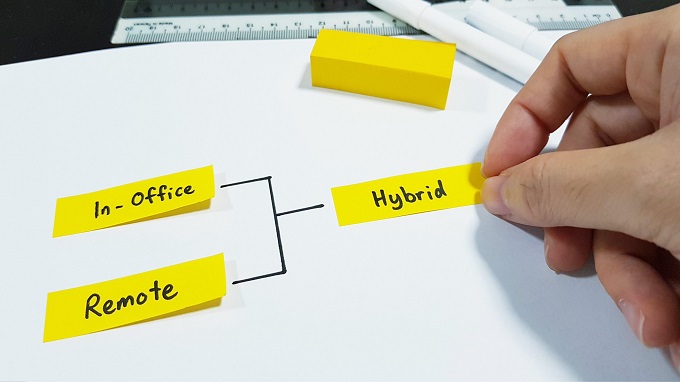

Five Critical Considerations in a Hybrid Work Environment: Information Governance
- Business Transformation
- 4 Mins
Information governance (IG) has never been needed more than in today’s workplace. It is clear that remote and hybrid workforce models are here to stay, and emerging technologies to support this way of working are creating endless data sources for organizations to consider in their IG program.
For example, the adoption of collaboration tools skyrocketed over the past two years and will continue to remain an integral part of business operations for many organizations. With new technologies and information sources, organizations must strategize on ways to modernize vital records and data management practices to reduce risk and maximize value.
Considerations looking forward
While often viewed solely as a back-office function, a comprehensive approach to your records and information management strategy is now critical in the face of data expansion and mass digitization. Policy creation should be more strategic and flow through all departments, as everyone is responsible for maintaining proper information governance hygiene. Below are five things to account for when transforming information governance programs during these digitally-fueled times.
- Accelerated digitization: It is well-established that the pandemic propelled many digital trends that were already materializing, such as moving away from paper documentation and increased remote work allowances. With many organizations across industries planning to continue operating off hybrid models, there are vital information management principles to revisit. Besides accounting for new data types and information repositories, there are other challenges teams may not have considered – one being how downsizing real estate affects retention policies. Less physical office space means less room to store hard copy documents. This provides an opportunity to dive deeper into retention policies and deploy innovative solutions such as automating document classification, updating digitization workflow and paper initiatives, and security storage enhancement. A strong program rests on a combination of technology deployment and policy development accounting for evolving workflows or digital habits.
- Physical security challenges: While remote working offers compelling benefits, it also inherently increases risk. Bringing home corporate devices and records, using personal devices, and operating off home networks are a few components of this working model to address. Actions to consider that limit risk include VPNs, shared drives, automatic cloud backups, minimum internet requirements, policies regarding locking devices when left unattended, limited printing capabilities, digital mailrooms, and designated collaborations platforms for internal or external communications. Contemplate current and future business needs to determine which information policies make the most sense and reduce the security challenges associated with hybrid working.
- Flexibility: While a certain rule may govern information habits, there is generally room for taking flexible approaches that vary between organizations, or even teams within a single organization. Factors to evaluate include globality, types of data collected and stored, risk appetite, and departmental priorities. This will help guide policy and procedure creation regarding information management and security. To maintain defensibility, ensure applicable rules and regulations are followed – such as adding extra security measures over certain document repositories where high-risk data is stored while implementing different processes for data requiring less oversight.
- Compliance: Data security and privacy are two major compliance drivers that are transforming information governance initiatives. The rise in cyber threats and increasing ransomware costs coupled with emerging privacy regulations render it crucial to build out cyber and information management policies together. Method of reducing risk include creating internal compliance roles, consulting with experts in these areas, outsourcing compliance functions such as consumer responses to information requests, implementing new security standards for remote workers, and tapping into automated technologies.
Planning: The foundation of a successful program is assessment and planning. Now is a perfect time to reflect on how certain remote processes have been working and what information management challenges exist to better prepare for the future. Some things to consider are areas that would benefit from automation or outsourcing, internal role creation, which data can also provide insights to inform strategic moves, applicable regulations, and storage capabilities. A transformed approach to information management improves the ability to serve clients while also reducing associated costs and mitigating risk associated with data loss or exposure. Training and auditing are also key for role recognition, especially when introducing modern technology and balancing remote capabilities. Equally as important, ensuring you are educating stakeholders on compliance best practices is necessary. Finally, consider document management system health checks to audit the current state of governance and storage operations and how hybrid work factors into these processes. This illuminates improvement areas to address in future information governance initiative planning.
The contents of this article are intended to convey general information only and not to provide legal advice or opinions.